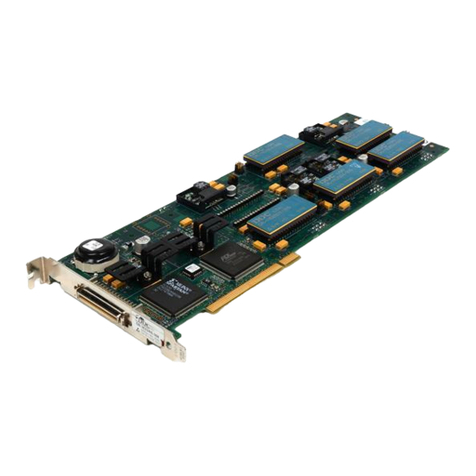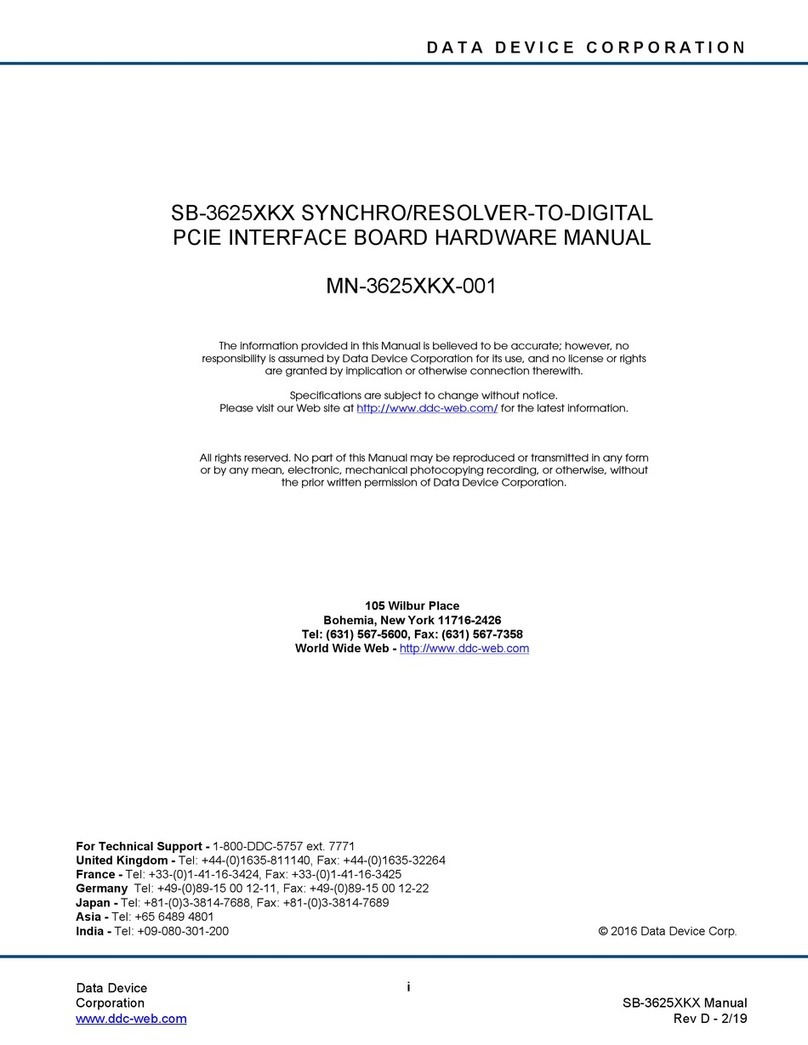
TABLE OF CONTENTS
Data Device Corporation SB-3642 Manual
www.ddc-web.com Rev D – 4/19
1PREFACE.............................................................................................................1
1.1 Text Usage..................................................................................................................1
1.2 Standard Definitions....................................................................................................1
1.3 Special Handling and Cautions ...................................................................................1
1.4 Trademarks.................................................................................................................1
1.5 What is included in this manual?.................................................................................1
1.6 Technical Support .......................................................................................................2
2OVERVIEW ..........................................................................................................3
2.1 Features......................................................................................................................3
2.2 System Requirements.................................................................................................4
2.3Configuration Options..................................................................................................4
2.4 Applications.................................................................................................................4
2.5 Mechanical Design......................................................................................................5
2.6 Specifications..............................................................................................................9
3HARDWARE INSTALLATION ...........................................................................13
3.1 Hardware Configuration and Operation.....................................................................13
4DETAILED ARCHITECTURE.............................................................................14
4.1 PCI Interface.............................................................................................................14
4.2 Synchro/Resolver to Digital Channels .......................................................................15
4.3 Additional Functionality .............................................................................................18
4.4 Card Pinouts .............................................................................................................21
5SOFTWARE .......................................................................................................24
5.1 Software Overview....................................................................................................24
6ORDERING INFORMATION ..............................................................................26





























